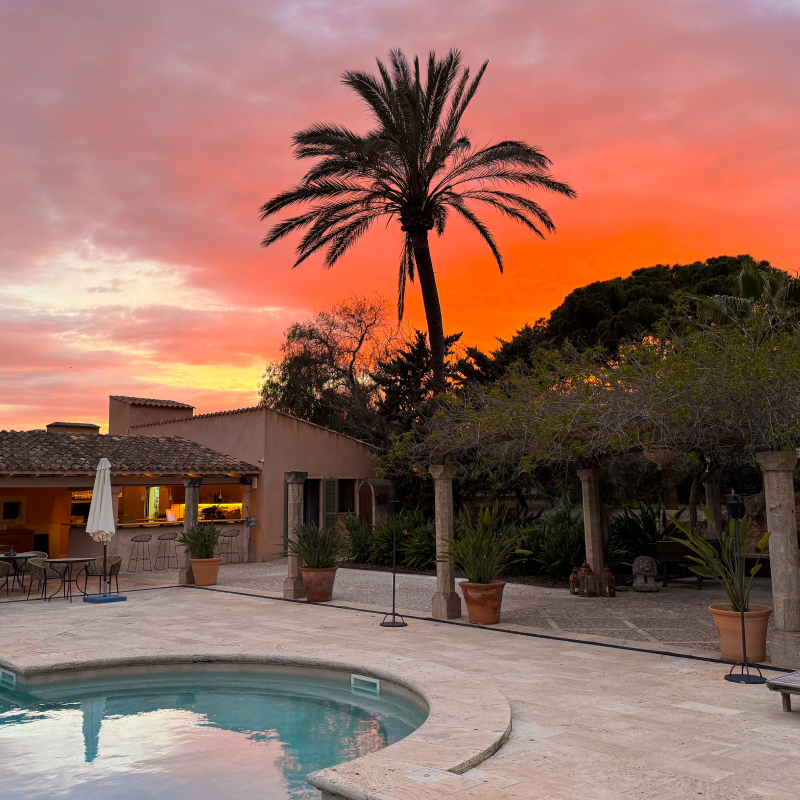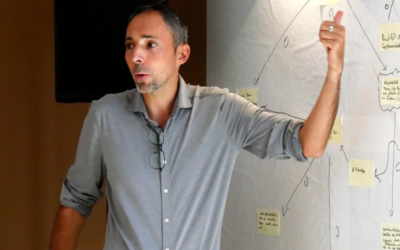I’ve taken part in agile certifications, yoga intensives, tantra workshops, coaching trainings, year groups, and even plant medicine ceremonies. What I’ve noticed again and again is that the most important moments are rarely on the slides, in exercises or in the teachings. They happen between people. In the silence, the discomfort, the friction. In the group. That’s where the work really begins. So this is somehow my field guide. A collection of things I wish someone had told me earlier.
In this post, I want to walk you through four essential steps in transformational group work. Let’s begin:
- The group is your mirror
- Boundaries are the practice
- Integration is the real work
- Why you might need a retreat
The group is your mirror
One of the first and most important realizations that hits — sometimes painfully, sometimes beautifully — is this:
“What annoys or triggers you in others is often a hidden message from yourself.”
It’s not the curriculum, it’s not the location, and it’s not even the facilitators that shape your transformation the most. It’s the people around you. Retreats are group experiences. And being in a group means you will see yourself reflected in others — whether you like it or not. Let me give you a few examples that show up again and again.
There’s the loud guy. He always speaks up first, dominates the conversation, fills the room with his opinions. And at first, it’s annoying. You find yourself thinking: “Why does he always take up so much space?” But then you ask yourself: Why is that so hard for me to tolerate? Maybe he’s showing you something — maybe it’s the part of you that wishes you were that confident. Maybe you want to take more space too, but you haven’t given yourself permission yet.
Then there’s the successful woman. She shares openly about her recent promotion, her business wins, the milestones she’s achieved. It sounds a bit like bragging. And again, it hits something. But look closer. Maybe you’re not triggered because she’s proud. Maybe you’re triggered because you’re not. Maybe part of you feels behind, or not seen, or unsure whether it’s okay to speak openly about what you’ve achieved — or what you still want.
And then there’s the sensual person. They wear open clothes, they move slowly and with intention, they make eye contact longer than you’re used to. They seem too much. It makes you uncomfortable. But is it really about them? Or is there something inside of you — some longing to be more expressive, more free, more in touch with your own sensuality — that hasn’t found space to show up yet?
These are just examples, but they matter. Because they show what retreat work is really about: being in a space where everyone becomes a mirror. A mirror for the parts of yourself you’ve forgotten, repressed, or just never allowed to speak. And once you realize that, the group becomes more than just company. It becomes your teacher.
Boundaries are sacred
There’s often a subtle — or not-so-subtle — pressure to participate fully in group settings. And that’s not always a good thing. As my therapist once told me, “Group work can be dangerous.” And I agree — not because retreats are bad, but because they can push people beyond their emotional boundaries without them realizing it. That’s why this next truth is so important:
“You don’t have to say yes to everything. Saying no can be your deepest yes.”
There’s a belief in many retreat spaces that you need to “go all in” to really transform. But that belief can be harmful. Because sometimes what’s needed isn’t more input or more openness — it’s more protection, more silence, more distance. I’ve seen it again and again. Someone shares something deeply emotional — about losing a job, burnout, fear, grief. And suddenly, the whole group shifts. You might feel like you have to match that intensity. You might feel the urge to open up too, to cry, to say something vulnerable — even if your body says no. That’s when it’s crucial to tune into your own signal. Are you truly ready? Or are you overriding your own limit to fit in, to be seen, to not feel left out?
This becomes even more important in spaces involving tantric or sexual energy work, or in plant medicine ceremonies. These are powerful, intimate tools — but they’re not shortcuts. They require emotional grounding, psychological stability, and skilled facilitation.
If you don’t feel ready — it’s okay to say no.
If you need to step outside a session, or sleep in instead of showing up at 7AM for breathwork, that’s okay too. You’re not missing out. You’re doing the work — the part of the work that’s about listening to yourself.
Sometimes growth looks like staying in. And sometimes, it looks like walking away.
Integration is the Real Work
There’s always that question after a retreat: “How can I take this into my everyday life?” “How can I keep the energy, the clarity, the openness I felt here — once I’m back home?” And the honest answer is: it depends on you. Coaches, facilitators, bodyworkers — they’re not magicians. They hold the space. They guide. But the moment the retreat ends, the real work begins. Because…
“Coaches and facilitators hold the moment. But you hold the outcome.”
Integration doesn’t always happen immediately. Some insights take weeks or even months to land. One day you’re in a difficult conversation and — without even thinking — you apply that one thing you learned during a nonviolent communication workshop. Or you feel burnout creeping in and remember the breathwork routine from that yoga retreat. That’s integration. Quiet. Personal. Long-term. And it works best when it’s gentle. Don’t overwhelm yourself with a strict new routine the moment you get home. Don’t expect yourself to wake up two hours earlier, cold plunge, journal, and meditate for 30 minutes before your first Zoom call.
Start with 10 minutes. One breath. A simple question: “What do I need today?” Also — don’t rush to talk about everything. I really recommend not spilling your whole retreat experience to your best friend two hours after it ends. Let it sink. Let it live inside you a little longer. Some experiences are too fresh, too personal, too sacred to explain right away. They deserve time. Write things down. Keep your journal. Return to your retreat notes when you need them. Stay curious — and give yourself permission to grow at your own pace.
Why You Might Need a Retreat
People sometimes ask me why I still go to retreats after all these years. My answer? Because space changes everything. Getting out of your regular environment — your phone, your calendar, your family, your expectations — gives your mind and body a signal: this is different. And when everything is different, new things can happen.
“You don’t need a retreat to change your life. But a retreat can show you what life could be like.”
A retreat is a reset. A break in the pattern. And it doesn’t need to be spiritual, emotional, or wild. It can be as simple as leaving your routine behind and focusing on one thing fully — with a group that’s doing the same. When you’re not surrounded by your usual habits and roles, you can access parts of yourself that are normally buried.
And when you’re held in a safe, well-facilitated group container — you might find the courage to make space for those parts to emerge. It’s not a shortcut. It’s not magic.
But it is a space where the potential for deep change is real.
A deep thank you to Caroline and Nicole from the Nourish Retreat for creating the container I just returned from — the space, the softness, the structure you held gave me the inspiration for this post. And also a huge thank you to the whole Team from Cal Reiet in Santanyi, it’s such a pleasure to be a guest in your house. And if you’re looking to reflect on your own next steps, I’d love to support you. You can book a 1-on-1 coaching session with me here.
Thank you for reading this far. If you want to work with me directly, I encourage you to book a 1:1 coaching with me. I hope this field guide gives you something to take with you — wherever your next group experience might lead




